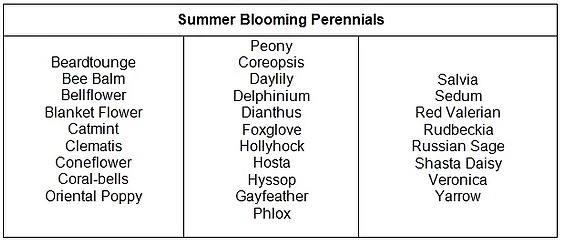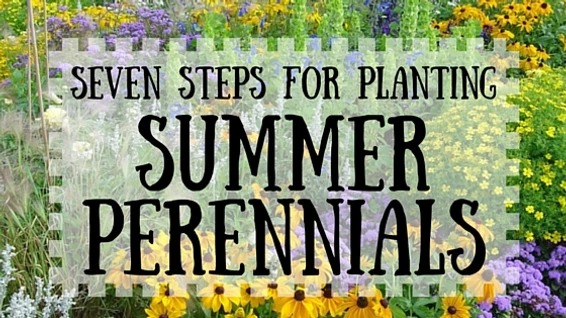1. Choose the right plant – Making sure your plant is suited to its new home is always important, but it becomes even more critical in the hot summer. Make sure to select a healthy plant, with green foliage and good roots. Check out the table below for some perennials the bloom throughout the summer. And visit our Perennials page for some more ideas

2. Amend Soil – Well-prepared soils are better for plant health and allow for proper drainage and more
efficient water retention. For summer planting, Colorado’s Choice B.O.S.S. is one of the best soil amendments available. Mix B.O.S.S. about half and half with your existing soil when planting.
3. Plant in the early morning or late afternoon – Planting in the morning and late afternoon will allow the perennials to get established without being exposed to extreme heat of the day and cut down on transplant shock. Plus, it keeps you out of the heat, too!
4. Plant in sections – Water each section after you finish before moving on to the next one. This will help avoid drying out the first plants and also reduce shock
5. Use a Starter Fertilizer – Using a root stimulator or starter fertilizer at the time of planting can really increase your plants chances of survival. The plant starter we recommend most often is Espoma’s Bio-Tone. Bio-Tone combines an all-natural plant food with mychorriaze, microorganisms that attach to the root systems of plants and help promote larger root masses so plants establish fast. This helps promote bigger blooms and reduces transplant loss. Just mix the Bio-Tone granules thoroughly in with your backfill soil.
6. Water – Watering is key during the hottest months of the year. Water thoroughly immediately after planting. Water plants every day for the first 3 days and check on plants every few days after that to make sure they are moist and water as needed. Make sure to water in the morning before 10 AM or in the evening after 6 PM to avoid evaporation. Add bark mulch on the surface of the soil to help hold moisture.
7. Deadhead – Simply trim back the dead, damaged or leggy stems and flowers. Removing the old growth encourages new blooms to form. It also keeps the plant appearance neat and tidy.

